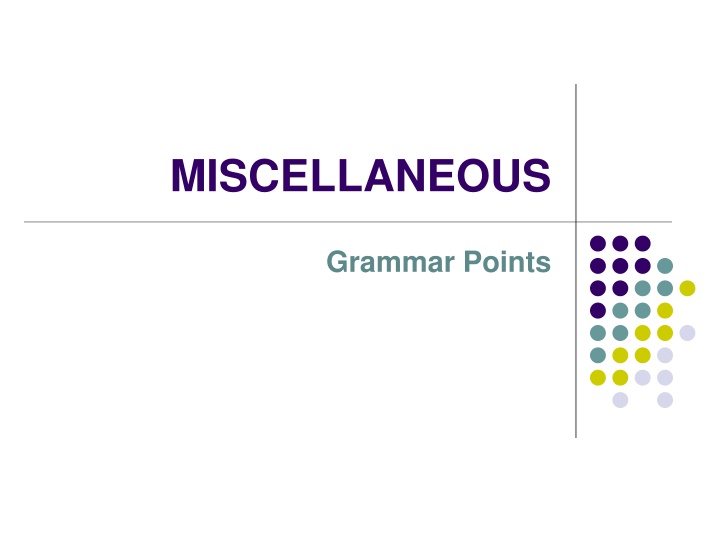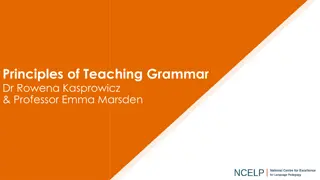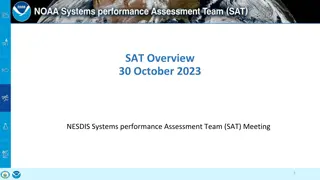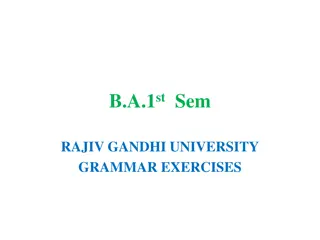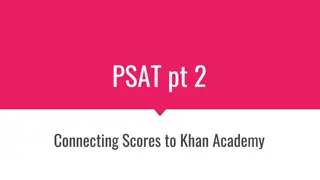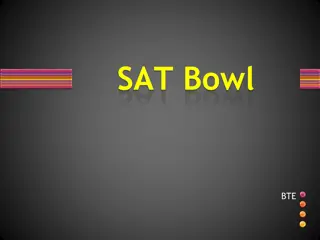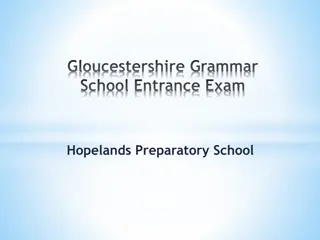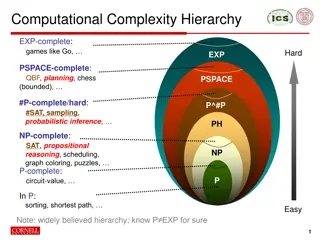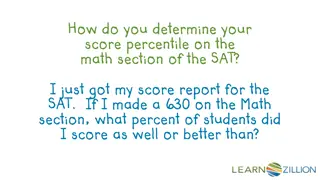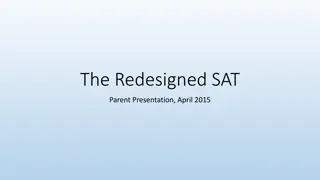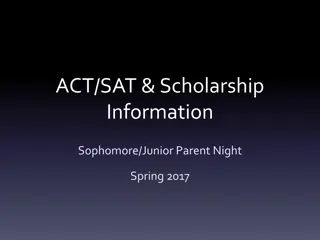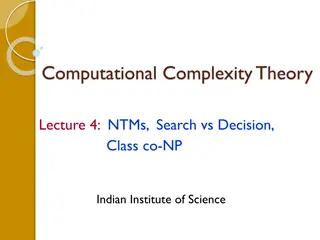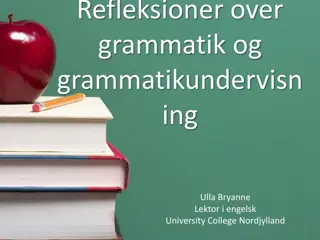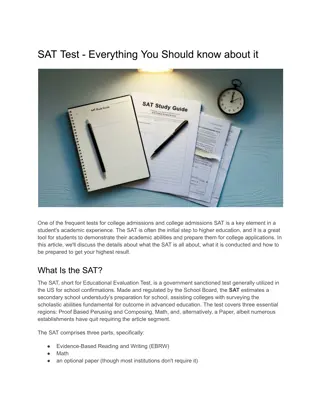Common Grammar Points for SAT Test Preparation
Explore essential grammar points for SAT test success, including parallelism, POV consistency, tense consistency, commonly confused words, and more. Enhance your writing skills and ace the SAT with these valuable tips.
Download Presentation

Please find below an Image/Link to download the presentation.
The content on the website is provided AS IS for your information and personal use only. It may not be sold, licensed, or shared on other websites without obtaining consent from the author.If you encounter any issues during the download, it is possible that the publisher has removed the file from their server.
You are allowed to download the files provided on this website for personal or commercial use, subject to the condition that they are used lawfully. All files are the property of their respective owners.
The content on the website is provided AS IS for your information and personal use only. It may not be sold, licensed, or shared on other websites without obtaining consent from the author.
E N D
Presentation Transcript
MISCELLANEOUS Grammar Points
You could see questions about the following on your SAT: Parallelism POV consistency Tense consistency Commonly confused words (like too, to, two or their, there, their) Plural vs. possessive Case (when to use we vs. us, they vs. them, etc.) *We ve started to look at many of these already!
PARALLELISM This refers to the structure of a sentence s parts/clauses; they need to follow the same format. PROBLEM: After school she often attends club meetings, is playing soccer, or tries to listen to music. FIXED: After school she often attends club meetings, plays soccer, or listens to music.
POINT of VIEW CONSISTENCY Once a POV first person, 2ndperson, 3rdperson is established, it must be maintained. PROBLEM: If you want to know the truth about the scandal, one should follow the money trail. FIXED: If you want to know the truth about the scandal, you should follow the money trail.
TENSE CONSISTENCY Once a tense past, present, future is established, it needs to be maintained. PROBLEM: At the party the guests are having a great time, but the staff members felt stressed. FIXED: At the party the guests are having a great time, but the staff members are feeling stressed.
COMMONLY CONFUSED WORDS Too: indicates an additional person, thing, amount, etc. She is going to the prom, too. To: part of a verb phrase or part of a prepositional phrase Verb: I like to ski. Preposition: She is going to the movie. Two: number I ate two donuts for breakfast. There: Indicates placement/position Put the dessert over there. Their: Indicates possession Students worked hard; I can see their efforts in making paper revisions. They re: contraction for they are I m going to sleep, but they re going to play Monopoly.
COMMONLY CONFUSED WORDS Its vs it s Its: indicates ownership The baseball team lost its fan base after tanking every game. It s: contraction for it is The school s football team won every game, and it s headed to play offs! Your vs. You re Your: indicates ownership Your car is parked in the wrong spot. You re: contraction for you are If you re going to drive, then park in the right spot.
PLURAL vs. POSSESSIVE PLURAL: indicates more than 1 of something. The seniors are about to graduate. The juniors want to drive next year. POSSESIVE: indicates ownership The seniors graduation date is June 15. (many seniors own that date) The junior s parking permit will be awarded. (one junior owns a permit) The juniors fee for a parking spot is high. (many juniors have a fee).
CASE Case (nominative, objective, etc. refers to forms words take based on its parts of speech/its function in a sentence. PROBLEM: The principal will sit in the auditorium in front of you and I. FIXED: The principal will sit in the auditorium in front of you and me. *Note that of starts a prepositional phrase, so you and me serve as the object of the preposition. Try re- writing: The principal will sit in front of I? NOPE! In front of ME. PROBLEM: Who is the coach considering for MVP? FIXED: Whom is the coach considering for MVP? *Note: Try re-writing to answer: The coach is considering him/he? The answer would be him, so whom is the answer, since it s the same case.
